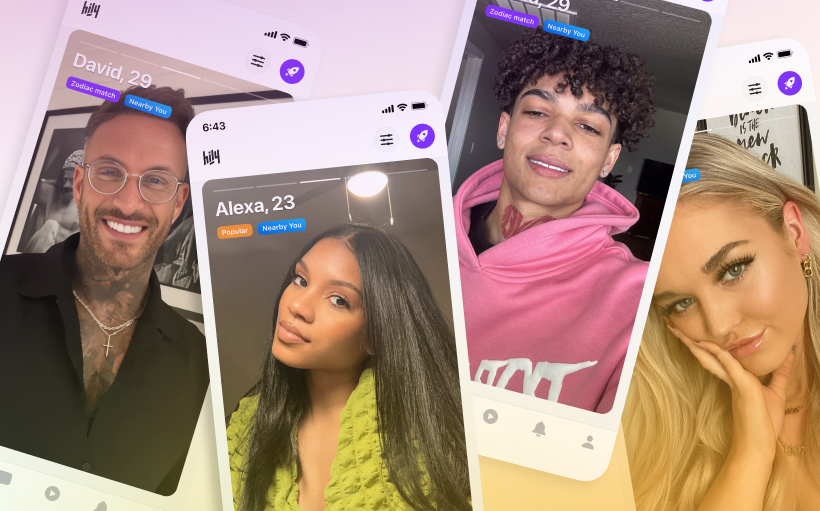Navigating Benefits and Challenges of a Female-Led Relationship
Ever wondered what it would be like if the power dynamics in a love relationship were shifted? Welcome to the concept of female-led relationships (FLRs). Within this dynamic, the woman carries a more dominant role, which questions traditional gender roles and reshapes the typical power structure in love and partnership. More couples are exploring this path in order to develop a relationship that is honest, exciting and particular to suit their specific needs.
The concept of a female-led relationship has gained momentum as society shifts toward more progressive views on gender equality. What exactly does this mean?
Let’s look at the complexity, benefits and challenges of FLRs, as well as their different types and how they affect relationship dynamics.
What Is a Female-Led Relationship?
A female-led relationship (FLR) is one where the female partner takes on a more dominant role, making important decisions and influencing the partnership’s power dynamics. Unlike traditional roles, in which the male partner frequently has the final word, a female-led relationship emphasizes mutual agreement and trust, with the female partner taking the lead and having more power in many aspects of life and love.
Rachel Zar, a licensed therapist, explains:
“A female-led relationship involves the woman having a higher level of control over certain areas, including finances, social life, or intimacy, but always with consent and open communication.”
This dynamic isn’t solely about physical intimacy, as it is often mistaken. FLR can also be a natural lifestyle where the woman’s influence is felt across everyday decisions.
Types of Female-Led Relationship
Female-led relationship dynamics can range greatly, from minor power changes to total dominance over her man. Here’s an outline of the common types:
Low Control Type
In many circumstances, the woman may have greater control over minor decision-making tasks, such as prioritizing social engagements or managing home duties. This follows the traditional partnership model, but the woman has the last word regarding numerous essential rules.
Moderate Control Female-Led Relationship
Here, the woman makes crucial decisions, such as financial or life choices. The partner may follow her in critical areas while still maintaining some control, resulting in a balanced relationship.
“The man is submissive, but levels of control tend to fluctuate and the dynamic can be fluid.”
Moshe Ratson, MFT, PCC Marriage & Family Therapist
Defined Control FLR
This type of relationship is built on trusting clear rules and open communication. The female partner takes the lead in certain areas, such as managing finances or setting boundaries around intimacy, always with mutual understanding. Both partners work together to establish a respectful and empowering dynamic, where boundaries are valued and understood.
Extreme Control FLR
At its most intense, this relationship showcases a deep level of trust and commitment, with the woman having full authority over various aspects of their partnership. This can include the male embracing submissive roles or specific behaviors that highlight the woman’s dominance. Such relationships are grounded in mutual consent, with both partners finding fulfillment and strength in their defined roles.
Related reading: Companionship vs. Relationship: What’s the Difference?
Benefits of a Female-Led Relationship
Many couples find that this approach is empowering and full of positive growth. It offers several wonderful benefits:
- Boosts women’s confidence: Women get to lead and make decisions that show their strength. This can make them feel more confident and proud of who they are.
- An FLR can provide the male counterpart with opportunities for personal improvement. Many men grow up with a sense of duty and authority, being told they must lead, provide and make important decisions. That might come with a lot of pressure. In an FLR relationship, the male can either step back or focus on helping his partner in specific areas. This allows him to discover who he truly wants to be in a relationship and explore roles that go beyond standard gender norms. It’s a journey of growth and self-awareness. It’s also an excellent opportunity for men to focus on empowering women. Supporting and encouraging your partner may be a pleasant experience that allows you to grow stronger together.
- Challenging old stereotypes: FLR questions traditional relationships and ways about who should lead. This creates space for more open, equal and modern relationships.
- Builds trust and closeness: Partners talking honestly about important household decisions and roles makes their connection and understanding deeper. It helps create a foundation of respect.
- Fosters teamwork: When women take a more active role in decision-making, it encourages shared responsibility. This teamwork builds stronger partnerships based on mutual respect.
The Role of Power Dynamics in FLRs
The dynamics are central to understanding woman-led romantic relationships. They highlight how decision-making and control shift from the male partner to the female partner. Whether subtle or extreme, the power structure is necessarily built on mutual consent.
In an FLR, the woman might have more control over financial decisions, while other aspects of life, like social life or household responsibilities, may also be influenced by her lead role.
A relationship counselor notes:
“Power dynamics in healthy female-led relationships are characterized by respect, consent and ongoing communication”
Traditional Ideas vs. Progressive Relationships
Historically, traditional gender roles dictated that the male partner wears the pants and makes the decisions, especially in heterosexual relationships. But many couples today are rejecting these traditional ways in favor of progressive relationships where roles are fluid and control is shared or reversed.
This relationship approach can vary from low control to extreme control, depending on the partners’ preferences. The woman as a female leader is increasingly common as many women take on more complete control in domestic and financial aspects.
Impact of Female Dominance in Relationship Dynamics
Dominance isn’t just about who makes decisions; it also reflects how the power influences all aspects of the relationship. This includes financial decisions, social life and more.
Related reading: 21 Romantic Gestures for Him That He’ll Love
Examples of Female-Led Relationship Dynamics
- The woman manages finances, shopping, or career decisions, with the male partner following her lead.
- They establish boundaries of submission and control in the bedroom.
- The female partner takes the lead in social situations or childcare, if applicable.
- They agree on important rules for life and relationship roles, often revisiting these as needed.
How to Start a Female-Led Relationship
If you’re curious about embracing a FLR, here are some steps to help you get started:
- Open a conversation. Discuss with your partner what it means for both of you. Clarify expectations, boundaries and comfort levels. Remember, partners have to agree on this and mutual consent is essential.
- Set boundaries and rules. Define important rules — like who manages finances, socials, or intimate boundaries. You might want to establish clear rules or formal agreements, especially at higher levels of control.
- Establish trust and communication. Create an environment where both partners feel safe to express their feelings and concerns. Use regular check-ins to ensure everyone is comfortable and needs are being met.
- Gradually increase control. Start with low-control aspects — like decision-making over household chores — and progress slowly toward more involvement or defined control, always respecting boundaries.
- Seek Support if Needed. Join online communities or consult relationship therapists familiar with FLRs for guidance and advice.
Remember, the goal is mutual fulfillment, not control for control’s sake.
Related reading: 31 Best Summer Date Ideas for Unforgettable Memories Together
Role of the Female Partner in a Woman-Led Relationship
In an FLR, the female partner often assumes a lead role, but it’s important to note that leadership doesn’t mean dictatorship. Instead, it’s about guidance built on mutual respect, more emphasis on mutual.
Responsibilities of the Female Partner
- Making major decisions like financial choices or life plans.
- Managing responsibilities related to socializing, family and health.
- Maintaining boundaries and rules.
- Communicating expectations clearly.
- Possibly taking the lead in intimacy, if applicable.
Traits of a Good Female Leader in FLRs
- Open-mindedness.
- Strong communication skills.
- Empathy and respect for the partner’s feelings.
- Flexibility to adapt roles as needed.
- Confidence in decision-making.
Related reading: 20+ Compliments for women to make her feel special and confident
Is Exploring a Female-Led Relationship Worth It?
Try this kind of relationship if it fits with your values and what you want. Embracing a female-led dynamic can lead to new levels of intimacy, trust and understanding that might not otherwise be possible, so it might be worthwhile. It’s about creating a partnership where you feel valued, respected and empowered.
Trying healthy FLR out does not imply rushing into anything; it is a journey to learn what works best for your relationship. Many couples discover that this road allows them to grow both individually and together, resulting in a stronger, more balanced partnership. It can promote deep contentment, mutual respect and a sense of shared accomplishment, in which both partners thrive as equals in their respective responsibilities.
Pursuing a female-led relationship could be one of your most satisfying decisions. It’s about embracing love, strength and collaboration — creating a future where both of you may thrive.
“Nowadays, relationships are a lot more equal, but there are still issues such as uneven financial privilege and gendered expectations which may disadvantage women.”
How to Address the Challenges of Female-Led Relationships
While woman-led relationships can be deeply rewarding, they also come with their own set of challenges if boundaries aren’t set clear. Dealing with those requires trust, communication and flexibility from both partners. Some important rules include maintaining healthy communication, respecting boundaries and ensuring partners are on the same page. Let’s take a closer look to understand how to navigate these challenges and build a strong, healthy dynamic together.
Potential Challenges
- Societal judgment and external pressures. Many people still hold ideas about gender roles and openly practicing an FLR may attract negative stereotypes or criticism from friends, family, or even strangers.
- Internal uncertainty. Some partners might feel guilt or conflict, especially if they’re used to traditional dynamics, or if societal norms influence their perceptions.
- Power imbalance risks. Without mutual consent and established boundaries, there is a danger of unhealthy control or coercion, which can harm trust.
- Change over time. As life circumstances evolve, desires and roles may need to be reevaluated. Flexibility and ongoing dialogue are essential for longevity.
- Miscommunication. If rules or boundaries aren’t clearly defined or regularly revisited, misunderstandings can arise, leading to resentment.
“If your female-led relationship has put you into a submissive position without your knowledge or consent, and you feel neglected or belittled by someone you expected to be on equal footing with, then perhaps it’s time to assert yourself and demand the kind of treatment you know you deserve.”
Marta Levchenko, Dating Coach and Professional Matchmaker
How to Overcome These Challenges
- Prioritize open communication. Regularly check in about feelings, constraints and comfort levels. Use safe words or signals whenever power play is involved.
- Establish clear boundaries and rules. Mutual agreements help prevent power imbalances from turning unhealthy. Remember, consent is a continuous process.
- Seek external support. Consider consulting relationship therapists, especially those experienced with FLRs, for guidance and to ensure both partners feel supported.
- Build a community. Connect with online or local FLR communities for advice, shared experiences and reassurance.
- Remain adaptable. Recognize that desires and dynamics may change. Be willing to revisit and adjust your relationship structure accordingly.
Related reading: Top 65 Powerful Words of Encouragement for Men to Inspire Growth
How to Maintain a Healthy Female-Led Relationship
To keep your FLR relationship thriving, focus on healthy practices that promote trust, respect and mutual satisfaction.
Establish Common Goals
Ensure that both partners understand the main intention — whether it’s control, self-exploration, or breaking tradition. Both should be on the same page.
Focus on Consent and Boundaries
Always respect personal boundaries and remember that ongoing consent is crucial. Be attentive to non-verbal cues and feelings.
Practice Transparency
Keep communication open about feelings, comfort levels and desires. When partners feel heard, trust grows stronger.
Regularly Reassess the Dynamic
As the real life changes, so might relationship needs. Schedule check-ins to review and redefine roles and boundaries.
Educate Yourself and Your Partner
Read about woman dominance, dynamics of power and relationship psychology. Knowledge helps establish healthy expectations.
“Female-led relationships can feel like a very intentional way to disrupt the status quo.”
Embracing the Power of a Female-Led Relationship
A female-led relationship isn’t just about flipping the script — it’s about creating a relationship that is authentic, respectful and fulfilling for both partners. It challenges traditional ideas about gender roles and encourages couples to explore new dynamics that better suit their personalities and desires.
Whether it’s a subtle influence or total control, what matters most is mutual consent, trust and open communication. When these elements are in place, a female-led relationship can be a healthy and empowering way to love differently.








